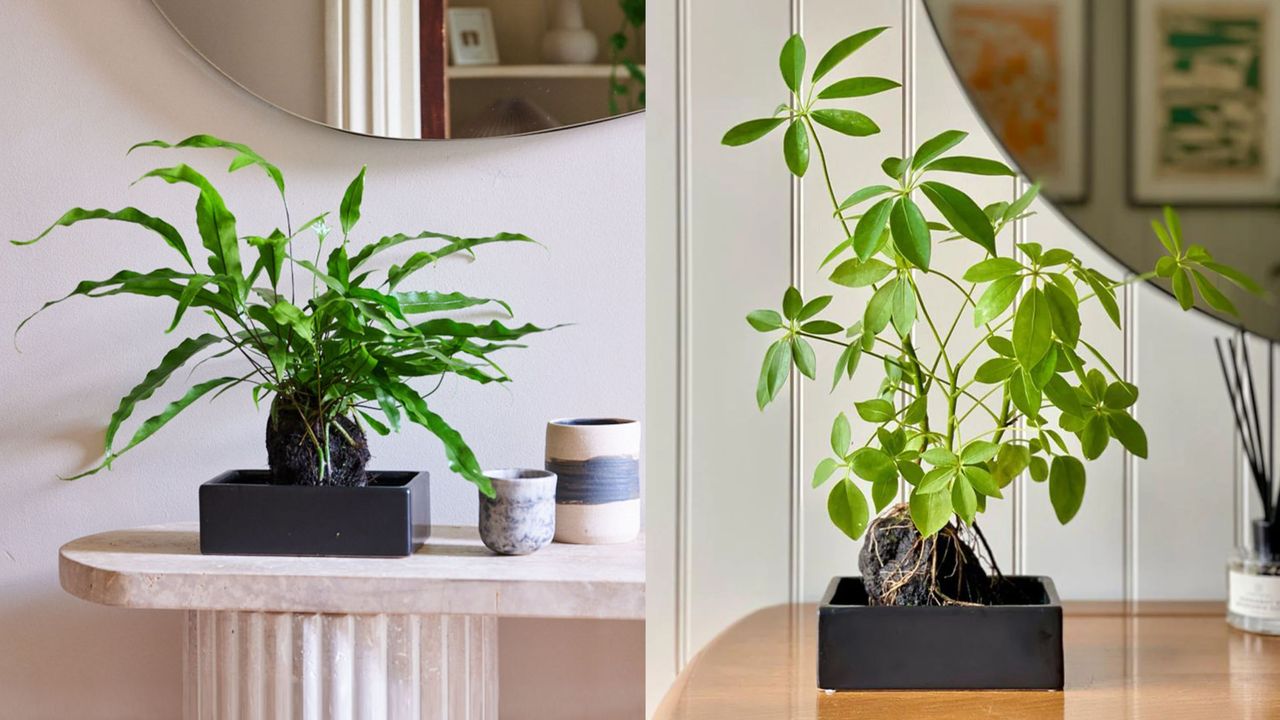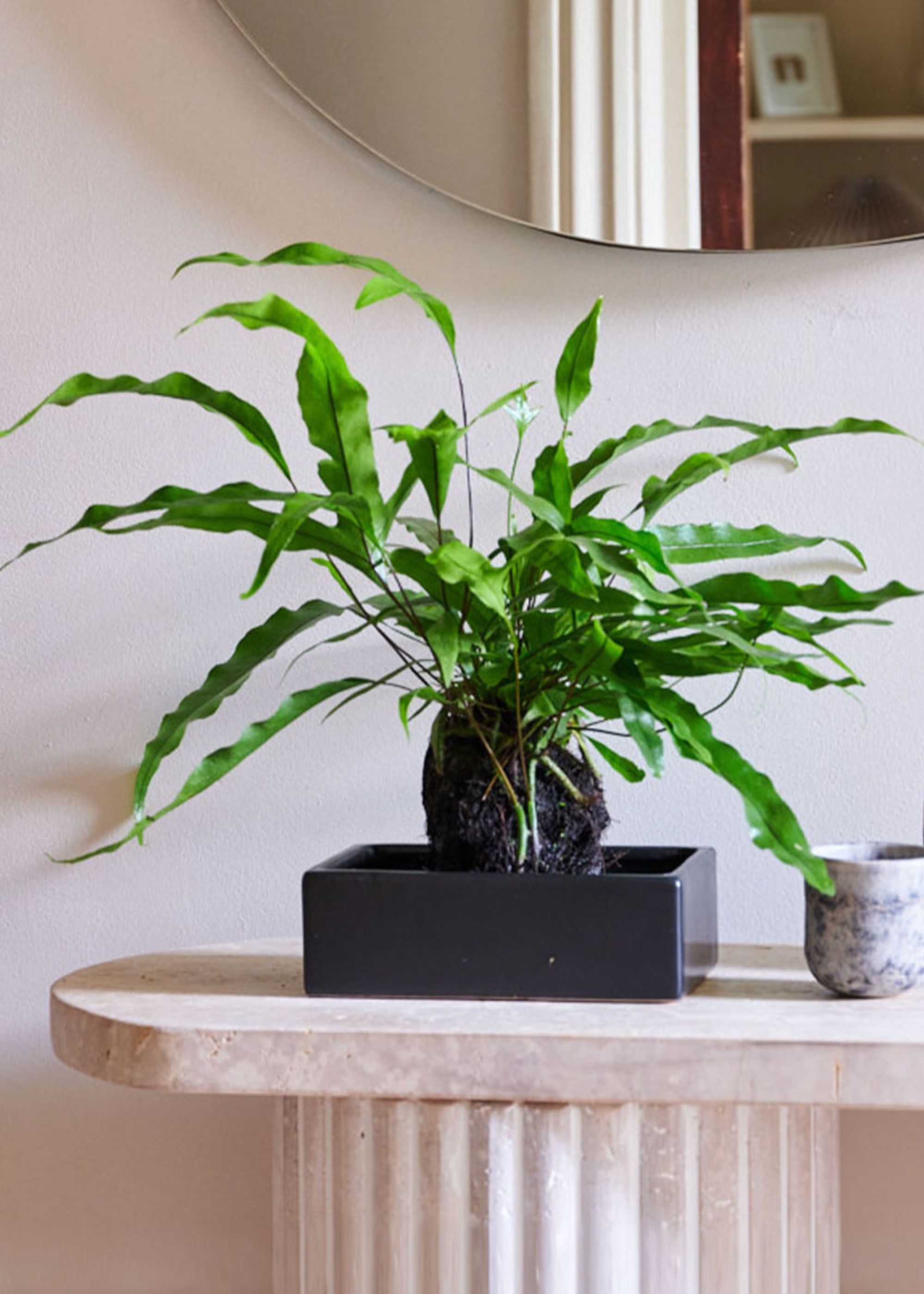
A plant that can grow on a lava rock, who would have thought? Lava rock houseplants are plants, such as Schefflera or Diversifolium (as well as a few others), that can grow on these specific rocks. But how? Well, this unique planting method can absorb moisture directly from the soil and water around the rock.
And of course, these popular houseplants have been on my radar for quite some time now, and after coming across the Lova Schefflera Lava Rock Plant from Amazon, I knew it was one I had to add to my basket — ASAP. Aside from its cool planting method, this houseplant is a chic way to bring minimalism into the home through indoor garden ideas. So what's not to love?
To learn more about houseplants growing on a single lava rock, I spoke to a plant expert and the founder of Beards & Daisies, Jo Lambell, about the pros and cons of this growing method, as well as how you can grow your own at the comfort of your own home. Here is everything you need to know.
Features:
Use: For Indoors
Brand: Thompson & Morgan
Color: Green
Expected blooming period: Year Round
Bring beauty and color into your space with this Lova Schefflera Lava Rock Plant from Amazon. Bringing a natural and decorative feel to those living room ideas, this little plant certainly makes for the perfect addition.
Could lava rock plants be the latest houseplant trend? Aside from its sleek and minimalist appearance, lava rock plants are lightweight and bring a natural feel into the home. But to get to the bottom of all things lava rock plants, I spoke to an expert, and this is what she had to say about it.
Jo Lambell, founder of Beards & Daisies and author of The Unkillables, tells me about how this method works and says, "Lava rock plants are plants that grow directly on or with lava rocks instead of in regular soil. Lava rocks are volcanic, lightweight, and porous, which means they drain really well and allow roots to breathe."
Jo continues, "The rock itself doesn’t provide nutrients, so the plant either rests on it with a little moss or soil to anchor the roots, or, in the case of air plants, just sits there absorbing moisture and nutrients from the air."
According to Jo, the main thing to bear in mind is how quickly rock can dry out and how few nutrients it holds. "That means you have to pay closer attention to watering and feeding than you would with a normal potted plant," she notes.
The plant expert says the type of plant used also matters. "Air plants and succulents are forgiving and thrive on a single rock with minimal fuss," she explains. "A tiny Schefflera can work, but it will need a bit of moss or soil wrapped around the roots to keep it stable and hydrated. Support and stability are important because the plant’s roots have nowhere to anchor, like they would in a pot of soil, so you might need to secure it lightly to the rock. Light is another critical factor; bright, indirect sunlight is ideal, just like for many of your standard houseplants."

These plants are certainly among the best to create an indoor zen garden. Its stylish appearance and beautiful leaves are one thing, but the lava rock adds interest as well as contrast to the space. With its rough aesthetic, mixing in with the bright, green leaves — what's not to love? But as lovely as it may look, there are a few pros as well as cons to keep in mind.
The advantages of this plant are that it holds a natural aesthetic, has excellent drainage that prevents root rot, is lightweight and easy to move, and lastly, the lava rock makes it easily reusable for new plants.
Its cons? Jo says lava rock plants have the following problems to look out for:
• No nutrients: Requires regular feeding.
• Dries out quickly: Plants that like consistent moisture may struggle.
• Not suitable for large or heavy plants.
• Stability can be an issue for taller plants.
How to Grow a Plant on Lava Rock
But can you grow this pretty little plant at home? The answer is yes, and luckily, Jo has provided us with a step-by-step guide on how you can keep up with your houseplant care schedule:
Step 1: Choose the right plant and prepare the rock by washing it clean.
Step 2: Optional — Create a small dip or nest with moss/soil to hold roots.
Step 3: Air plants can rest on the rock and be lightly secured with wire or non-toxic glue.
Step 4: Succulents need a small moss/soil pocket for roots.
Step 5: Small tropicals like Schefflera need moss wrapped around roots to retain moisture and provide stability.
Step 6: Water carefully, depending on plant type, never letting roots sit in water.
Step 7: Place the rock in bright, indirect sunlight.
Step 8: Feed occasionally with a diluted liquid fertilizer.
Step 9: Maintain like any houseplant: remove dead leaves, monitor moisture, and rotate for even growth.
It's as simple as that!
Where to Buy Lava Rock Plants
This Schefflera on lava from Beards & Daises is around W14cm x H30-40cm (Tray 11cm x 17cm). It sits on its own lava rock and can thrive in indirect light, with moist soil.
This Lova Diversifolium from Amazon comes in a lovely little ceramic tray with a single lava stone. Its able to thrive under full sun and can last all year round if taken care of properly.
A little beauty, this Schefflera from Patch Plants can thrive with light watering, medium light and a moist atmosphere. The plants height is around 30-40cm and will certainly look ravishing in any corner of the home.
This Cryptocoryne variety from Aqua Essentials is from Sri Lanka, is versatile, and makes for a striking focal point to add character to your space. The rock size is approximately 5-7cm.
This sweet anubias on lava rock from Lincolnshire Pond Plants Ltd is approximately 12cm wide and can grow beautifully with the right care. I mean, just look at how sweet it looks.
Another lovely anubias on a mini lava rock, this plant from Aqua Essentials is easy to take care of and can grow up to 5cm tall. Its growth rate can be quite slow, but remember, patience is key for nature's beauties.
Have these stunning lava rock plants inspired you? Or perhaps you want to take your styling game to the next level and decorate with flowers? There's so much to do within a home to brighten it up, and plants are certainly the perfect way to do just that.







